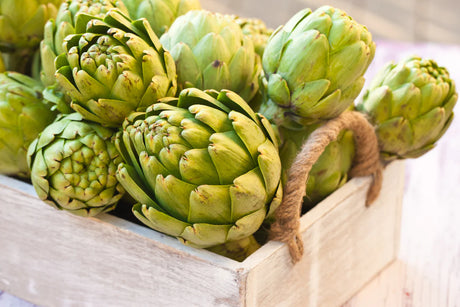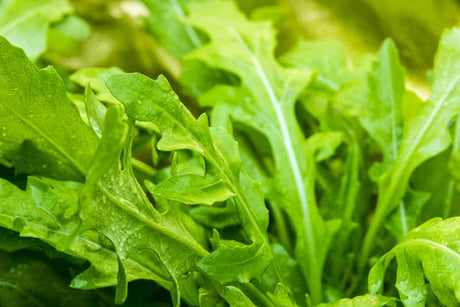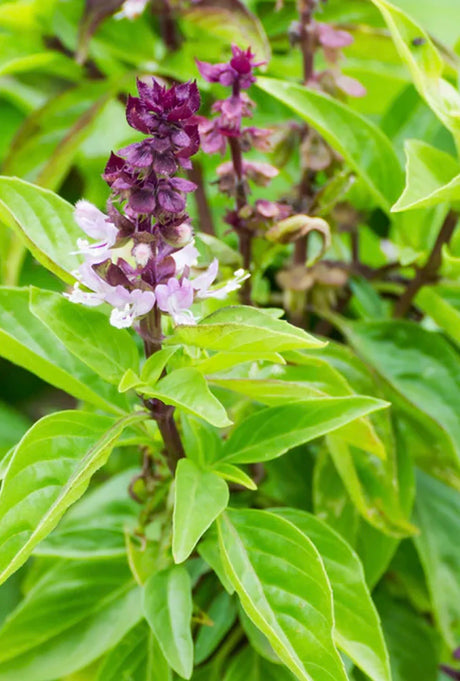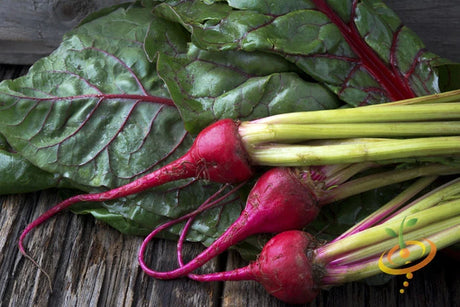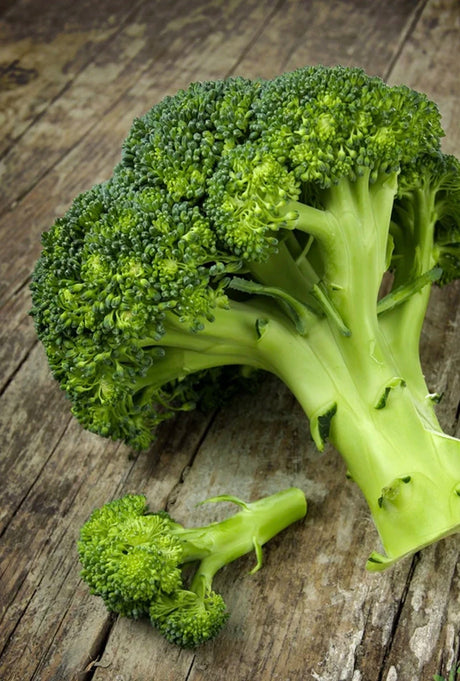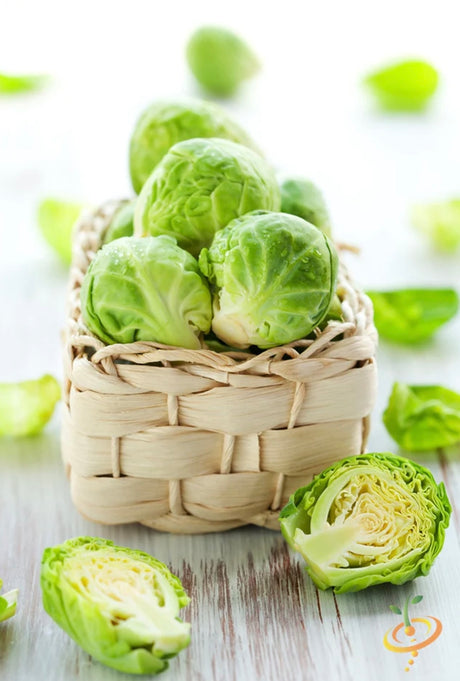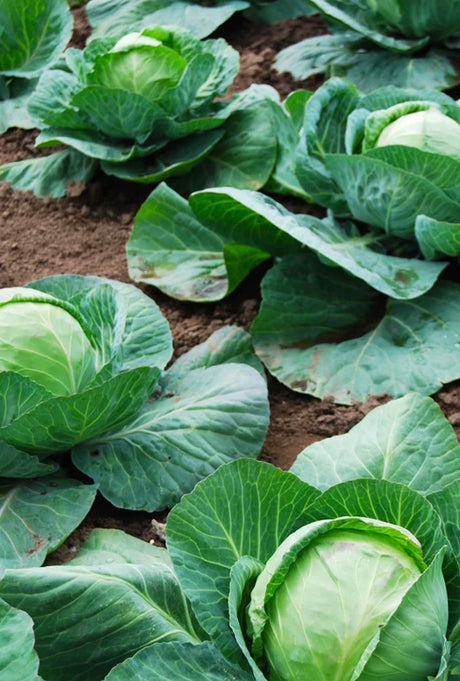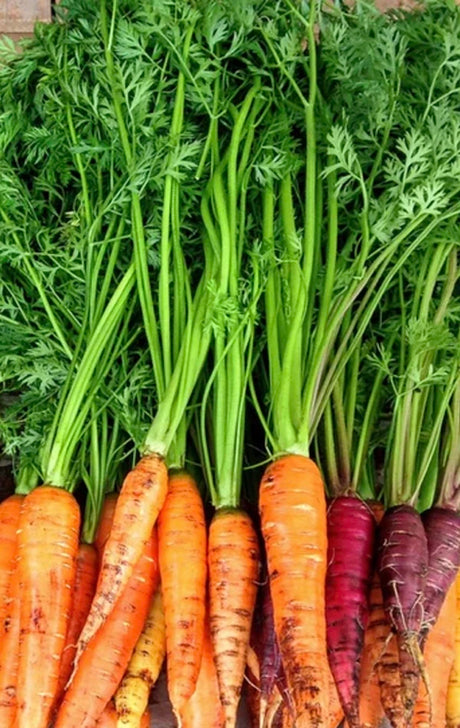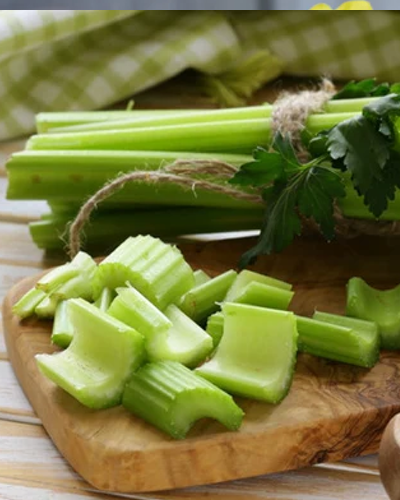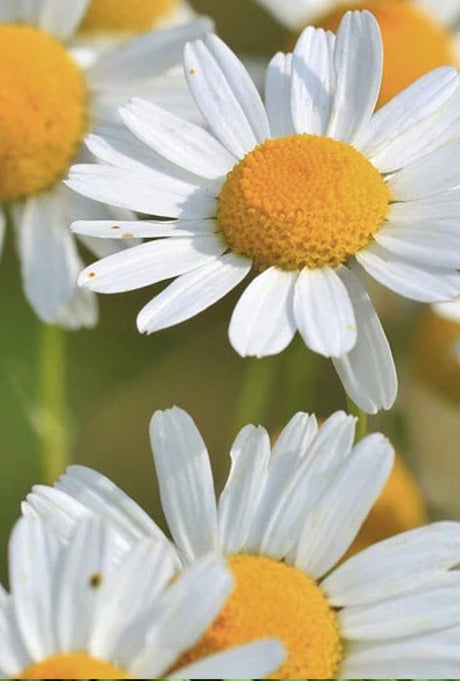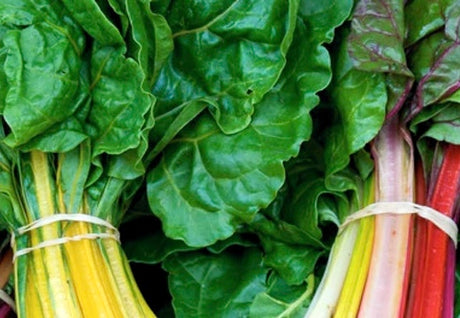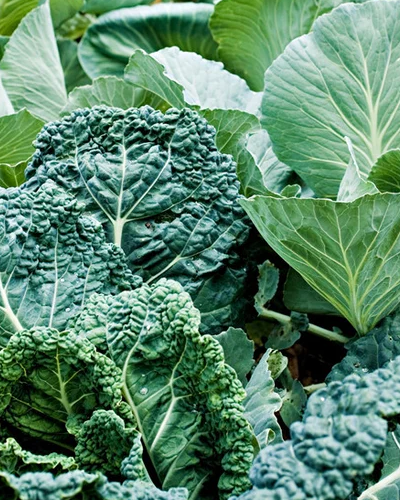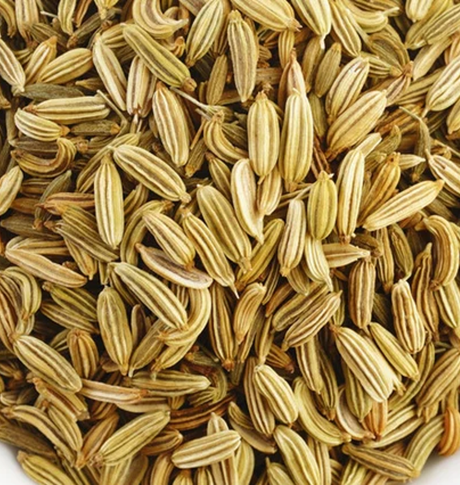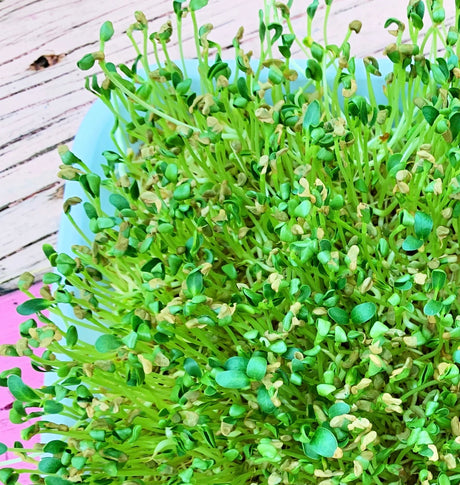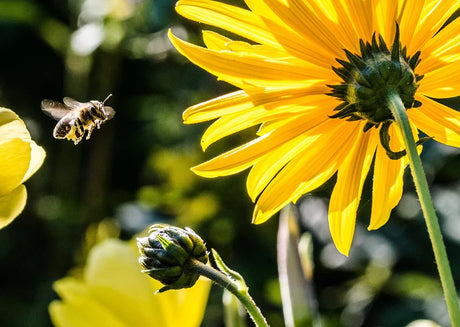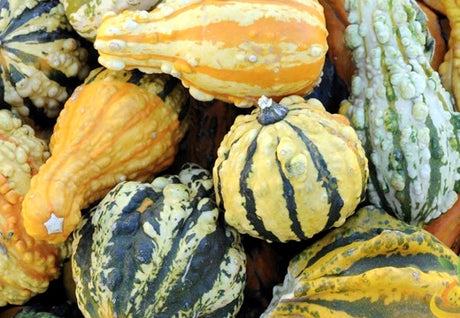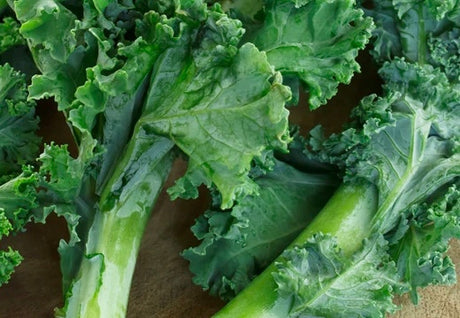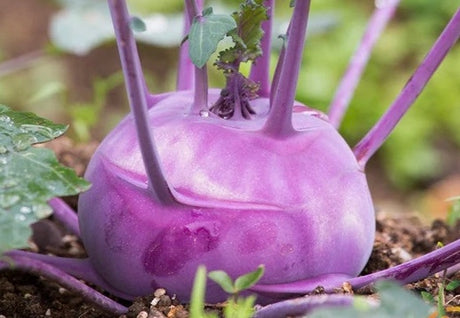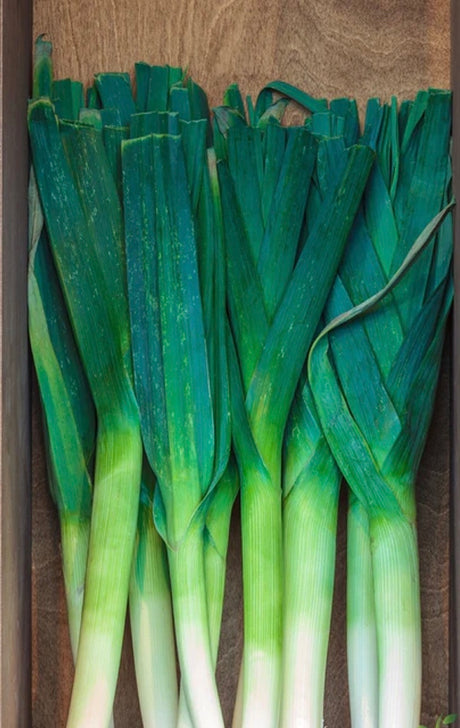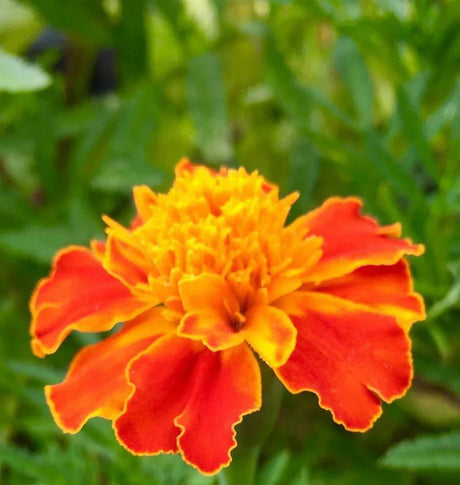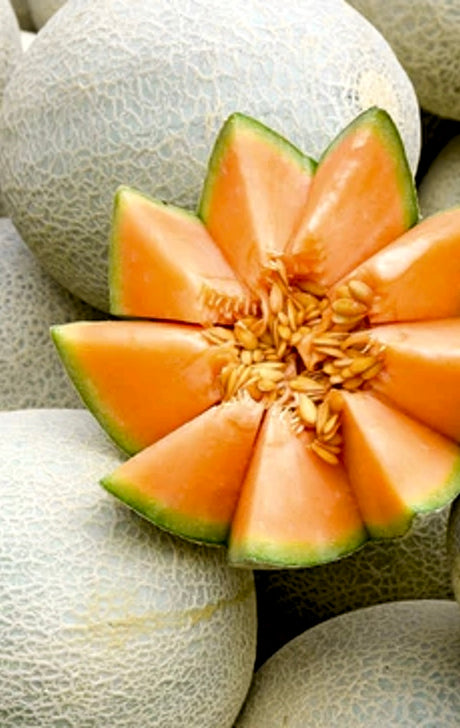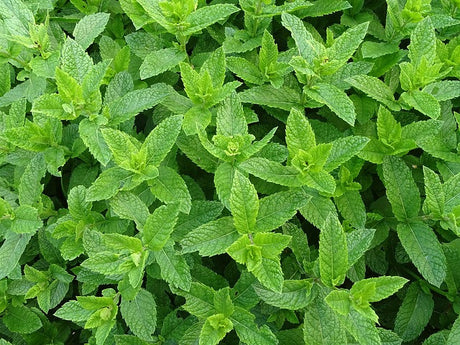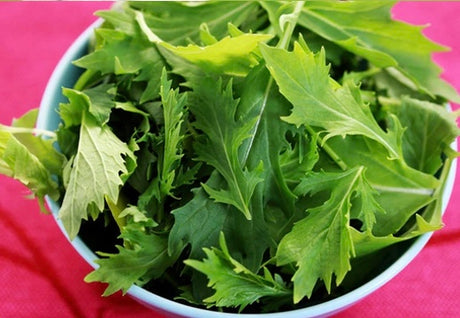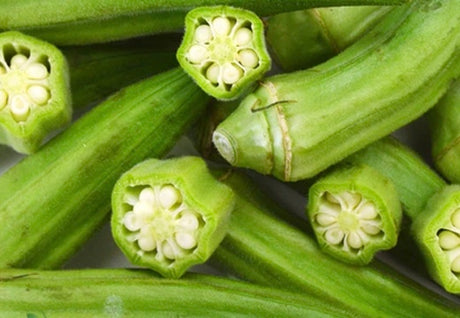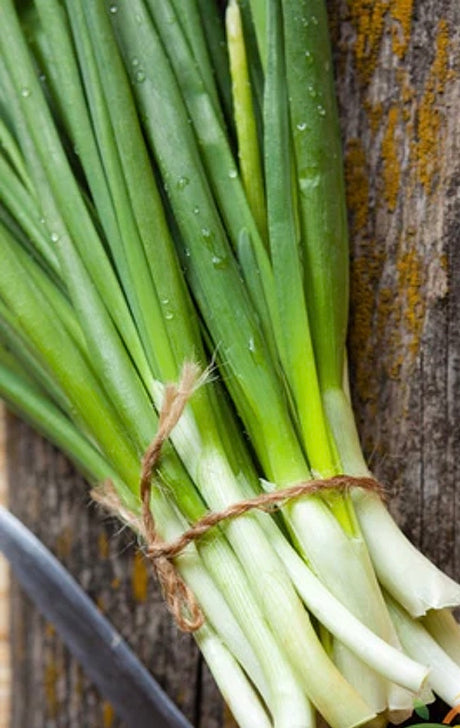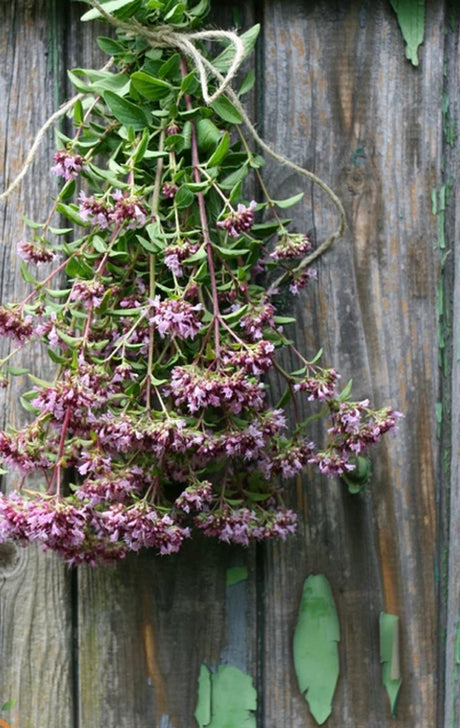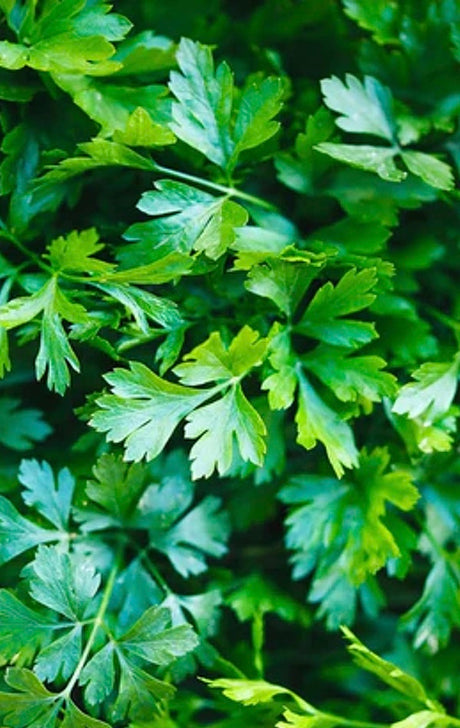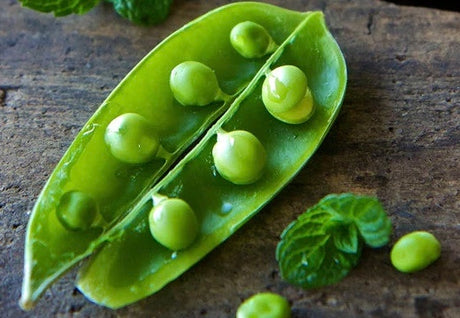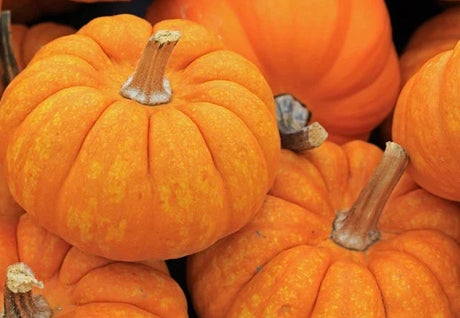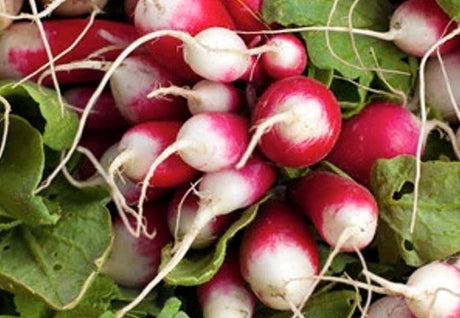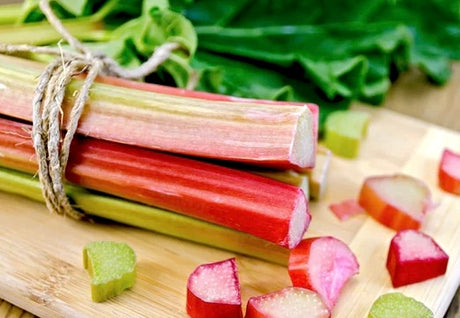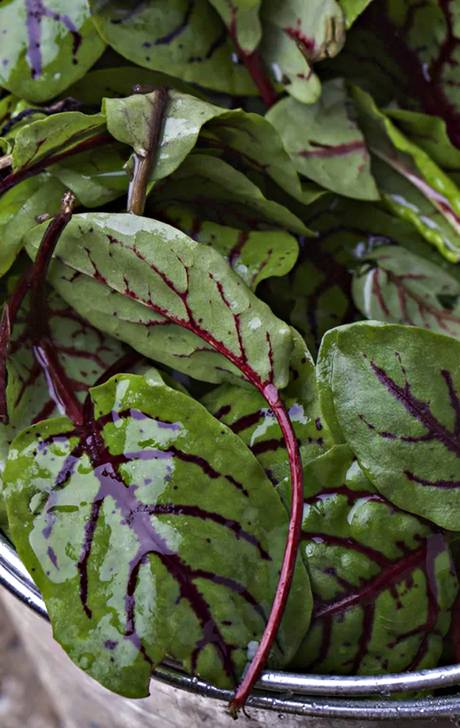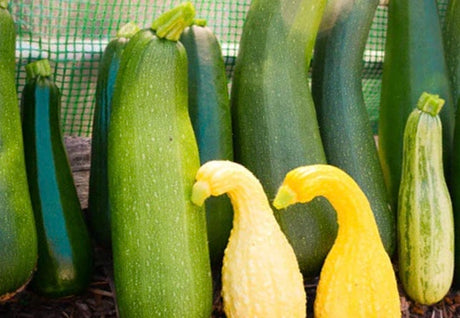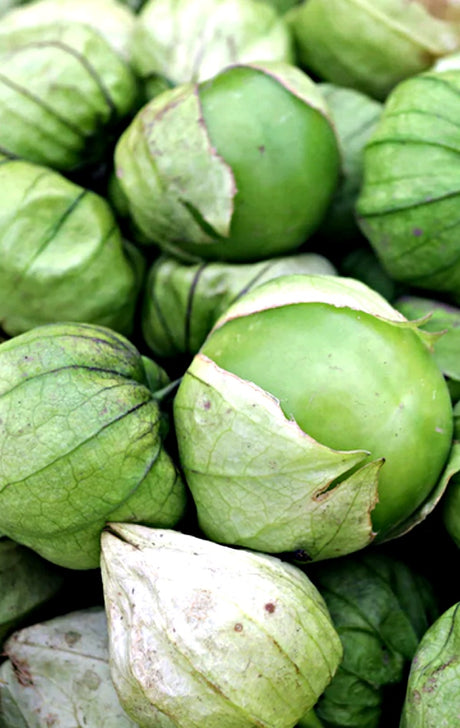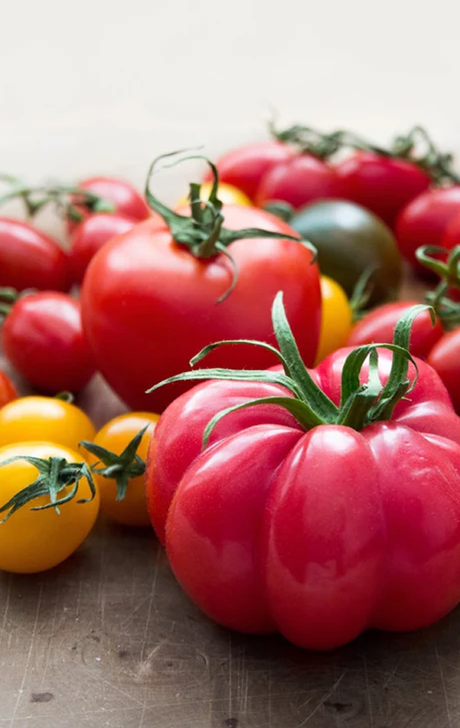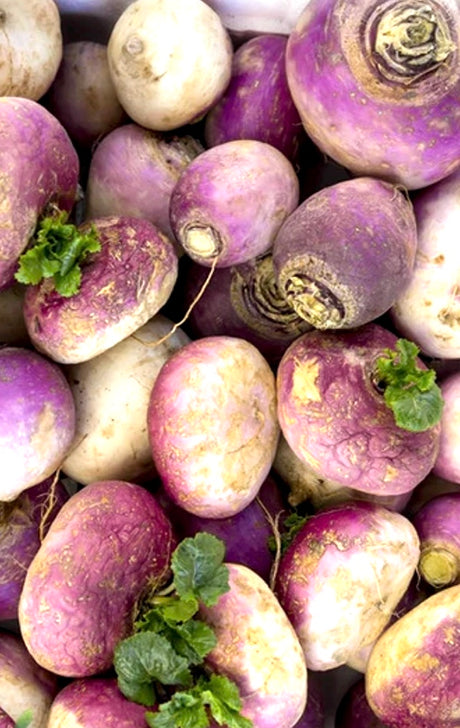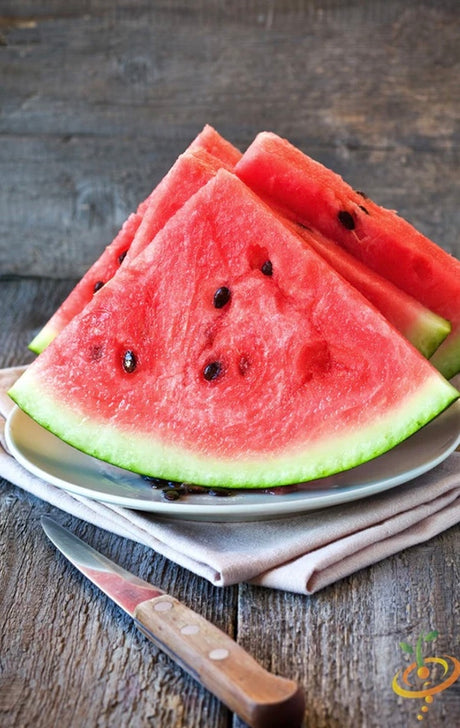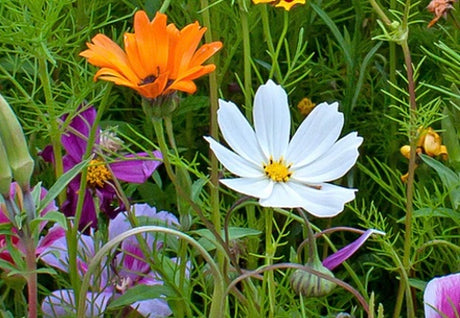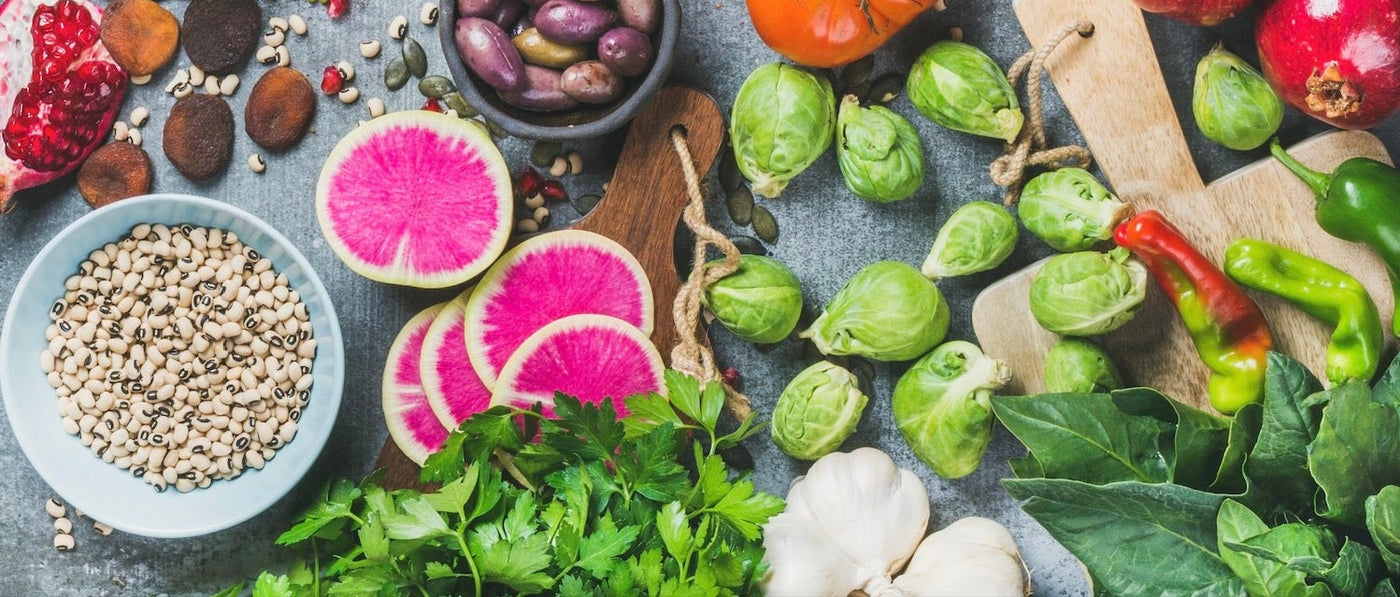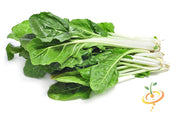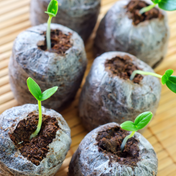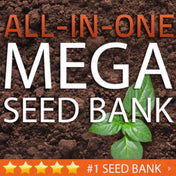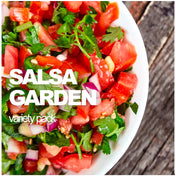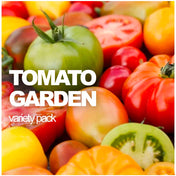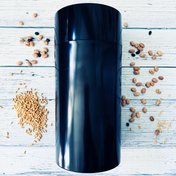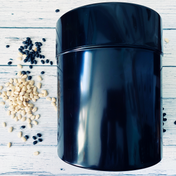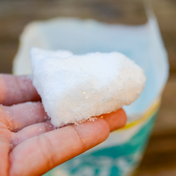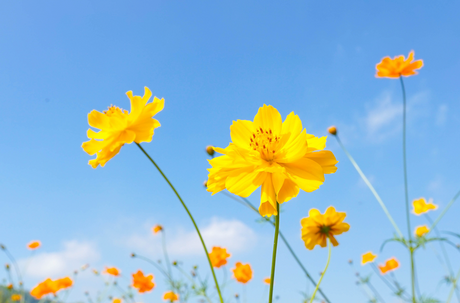- From $399 USDUnit price /Unavailable
Description

- A very popular red variety eaten raw or fully cooked. Used in coleslaw. Heads produce deep red, globe shapes and measure up to 6 to 7 inches in diameter. A colorful addition to a garden landscape. The Red Acre stores better than most early cabbage.
-
Days to Maturity | 75 days
-
Cabbage Seeds | Cabbage is an annual cool-season crop, hardy to frost and light freezes. Plant in rows 2 1/2 feet apart, with 12-16 inches between plants.
Click here for complete Cabbage grow guide
Additional Details
Did you know? Cabbage is an excellent source of vitamin C! It also contains significant amounts of glutamine, an amino acid that has anti-inflammatory properties. Cabbage can also be included in dieting programs, as it is a low calorie food.
- A very popular red variety eaten raw or fully cooked. Used in coleslaw. Heads produce deep red, globe shapes and measure up to 6 to 7 inches in diameter. A colorful addition to a garden landscape. The Red Acre stores better than most early cabbage.
- From $399 USDUnit price /Unavailable
Description

- The Michihili cabbage is a rare Chinese variety that produces a cylindrical, leafy head which measures 16" long and 6" across
- The light green leaves are very tender and delicious
- They are perfect for stir-fry and pickling
- Grows really well in mild climates
-
Days to Maturity | 70 days
-
Cabbage Seeds | Cabbage is an annual cool-season crop, hardy to frost and light freezes. Plant in rows 2 1/2 feet apart, with 12-16 inches between plants.
Click here for complete Cabbage grow guide
Additional Details
Did you know? Cabbage is an excellent source of vitamin C! It also contains significant amounts of glutamine, an amino acid that has anti-inflammatory properties. Cabbage can also be included in dieting programs, as it is a low calorie food.
- The Michihili cabbage is a rare Chinese variety that produces a cylindrical, leafy head which measures 16" long and 6" across
- From $399 USDUnit price /Unavailable
Description

- A large heirloom cabbage with deep red heads that have good flavor and are very colorful
-
Days to Maturity | 80-90 days
-
Cabbage Seeds | ❄️ Cabbage is an annual cool-season crop, hardy to frost and light freezes. A smaller cabbage head has better flavor and can stay in the field longer without splitting. To keep them small, plant close together or, when the head is almost full, give the plant a sharp twist to break up the roots. 😀 Cabbage is a wide spreading foliage plant with handsome leaves that form a tight, hard ball head on a strong central stem. Young plants may bolt if grown at 50F for a long time; however mature plants of late varieties improve flavor in cold weather.
Click here for complete Cabbage grow guide
Additional Details
Did you know? Cabbage is an excellent source of vitamin C! It also contains significant amounts of glutamine, an amino acid that has anti-inflammatory properties. Cabbage can also be included in dieting programs, as it is a low calorie food.
- A large heirloom cabbage with deep red heads that have good flavor and are very colorful
- From $399 USDUnit price /Unavailable
Description

- This Golden Acre variety is recommended by USU.
- A slow bolting, vigorous, early cabbage with 5 to 6 inch round head.
- Mild flavor
- Easy to grow
-
Days to Maturity | 65 days
-
Cabbage Seeds | Cabbage is an annual cool-season crop, hardy to frost and light freezes. Plant in rows 2 1/2 feet apart, with 12-16 inches between plants.
Click here for complete Cabbage grow guide
Additional Details
Did you know? Cabbage is an excellent source of vitamin C! It also contains significant amounts of glutamine, an amino acid that has anti-inflammatory properties. Cabbage can also be included in dieting programs, as it is a low calorie food.
- This Golden Acre variety is recommended by USU.
- From $399 USDUnit price /Unavailable
Description

- The Danish Ballhead is an old-time favorite which grows well during the winter months
- Danish Ballhead produces sizable 7-10 inch heads weighing up to 5-6 pounds/each
- The interior flesh is light green, mild, and tender
- It is a very dependable general-purpose cabbage for kraut, slaw, and cooking
- Days to Maturity | 90 days
Additional DetailsDid you know? Cabbage is an excellent source of vitamin C! It also contains significant amounts of glutamine, an amino acid that has anti-inflammatory properties. Cabbage can also be included in dieting programs, as it is a low calorie food.
- The Danish Ballhead is an old-time favorite which grows well during the winter months
- From $399 USDUnit price /Unavailable
Description

- Copenhagen cabbages are a good early variety that produces uniform, globe-shaped 6" diameter heads that are firm and solid, weighing about 3 -4 lbs
- The plant is compact and short-stemmed
- Heads are a light green color
-
Days to Maturity | 65 days
-
Cabbage Seeds | Cabbage is an annual cool-season crop, hardy to frost and light freezes. Plant in rows 2 1/2 feet apart, with 12-16 inches between plants.
Click here for complete Cabbage grow guide
Did you know? Cabbage is an excellent source of vitamin C! It also contains significant amounts of glutamine, an amino acid that has anti-inflammatory properties. Cabbage can also be included in dieting programs, as it is a low calorie food.
- Copenhagen cabbages are a good early variety that produces uniform, globe-shaped 6" diameter heads that are firm and solid, weighing about 3 -4 lbs
Cabbage - Charleston Wakefield
From $399 USDUnit price /UnavailableDescription

- These seeds produces good yields of 4 lb heads of cabbage
- Excellent flavor and very popular
-
Day to Maturity | 75 days
-
Cabbage Seeds | Cabbage is an annual cool-season crop, hardy to frost and light freezes. Plant in rows 2 1/2 feet apart, with 12-16 inches between plants.
Click here for complete Cabbage grow guide
Did you know? Cabbage is an excellent source of vitamin C! It also contains significant amounts of glutamine, an amino acid that has anti-inflammatory properties. Cabbage can also be included in dieting programs, as it is a low calorie food.
- These seeds produces good yields of 4 lb heads of cabbage
Cabbage - Bok Choy, Chinese Pak Choi
From $399 USDUnit price /UnavailableDescription

- This is the very popular Chinese non-heading Cabbage variety
- Produces loose spoon shaped leaves with thick white ribs
- Tender, crisp and mild
- Cold resistant
-
Days to Maturity | 45-50 days
-
Cabbage Seeds | Cabbage is an annual cool-season crop, hardy to frost and light freezes. Plant in rows 2 1/2 feet apart, with 12-16 inches between plants.
Click here for complete Cabbage grow guide
Did you know? Cabbage is an excellent source of vitamin C! It also contains significant amounts of glutamine, an amino acid that has anti-inflammatory properties. Cabbage can also be included in dieting programs, as it is a low calorie food.
- This is the very popular Chinese non-heading Cabbage variety
- From $399 USDUnit price /Unavailable
Description
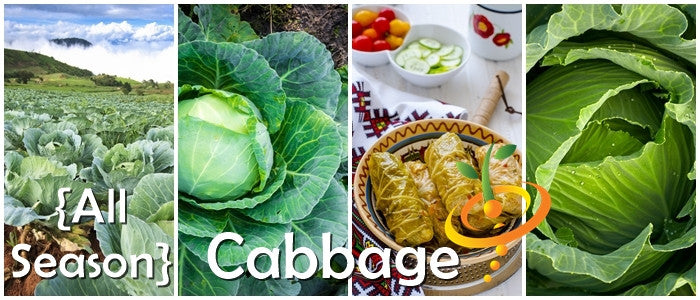
- These seeds produces very flavorful heads of cabbage.
- Very reliable variety
- It is best known as one of the earliest and best cabbages on the market
- Suitable for spring, summer, and fall crops -
Days to Maturity | 65 days
-
Cabbage Seeds | ❄️ Cabbage is an annual cool-season crop, hardy to frost and light freezes. A smaller cabbage head has better flavor and can stay in the field longer without splitting. To keep them small, plant close together or, when the head is almost full, give the plant a sharp twist to break up the roots. 😀 Cabbage is a wide spreading foliage plant with handsome leaves that form a tight, hard ball head on a strong central stem. Young plants may bolt if grown at 50F for a long time; however mature plants of late varieties improve flavor in cold weather.
Click here for complete Cabbage grow guide
Additional Details
Did you know? Cabbage is an excellent source of vitamin C! It also contains significant amounts of glutamine, an amino acid that has anti-inflammatory properties. Cabbage can also be included in dieting programs, as it is a low calorie food.
- These seeds produces very flavorful heads of cabbage.
Brussels Sprouts - Long Island Catskill
From $399 USDUnit price /UnavailableDescription

- Brussels sprouts have shallow roots, so as they become top heavy, you may need to stake them, particularly if exposed to strong winds.
- As with other brassicas, Brussels Sprouts are susceptible to pests and diseases that must be kept under control early in the season. As with other brassicas, composting roots should be avoided.
- Brussels Sprouts should not be grown within a 10 foot radius of any brassica growing location within the last 3 years, preferably 7 years.
- Brussels Sprouts are high in calcium and iron, as well as a good source of vitamins A and C.
- This popular Brussels Sprout variety produces miniature cabbage-like heads which are extremely tasty and nutritious.
-
Days to Maturity | 90-120 days
- Brussel Sprouts | Start seed indoors in early May so plants are ready to set out in June or early July. The sprouts develop best in cool weather. Plant in rows 3 feet apart, with 30 inches between the plants.
Additional Details
Brussels sprouts contain sulforaphane, a chemical believed to have potent anti-cancer properties. Although boiling reduces the level of the anti-cancer compounds, steaming, microwaving, and stirring.
Good Companion Plants for Brussels Sprouts 📚 Grow Guide: Brussels Sprouts - Brussels sprouts have shallow roots, so as they become top heavy, you may need to stake them, particularly if exposed to strong winds.
- From $399 USDUnit price /Unavailable
Description

- This popular broccoli variety produces a short, 24 inch plant with medium-large heads.
- Withstands cold extremely well.
- Best grows for a fall crop.
-
Days to Maturity | 85 days
- Broccoli is high in vitamin C, as well as dietary fiber; it also contains multiple nutrients with potent anti-cancer properties, such as diindolylmethane and small amounts of selenium. A single serving provides more than 30 mg of Vitamin C and a half-cup provides 52 mg of Vitamin C.
- This popular broccoli variety produces a short, 24 inch plant with medium-large heads.
- From $399 USDUnit price /Unavailable
Description

- This variety of Broccoli produces tightly packed, blue/green flower heads on strong short stems.
- Can be picked regularly and new shoots will continue to grow!
- This is one of the more popular Broccoli varieties available.
-
Days to Maturity | 65 days
- Broccoli is high in vitamin C, as well as dietary fiber; it also contains multiple nutrients with potent anti-cancer properties, such as diindolylmethane and small amounts of selenium. A single serving provides more than 30 mg of Vitamin C and a half-cup provides 52 mg of Vitamin C.
- This variety of Broccoli produces tightly packed, blue/green flower heads on strong short stems.
- From $399 USDUnit price /Unavailable
Description

Borage, also called Starflower, is a fast-growing flowering herb with bright blue star-shaped flowers and fuzzy stems and leaves, all edible and they taste like cucumber. Grows 1'-3' tall and reseeds liberally, so it can become invasive. Use the young leaves like spinach and the sweet little flowers as a charming garnish on salads and cakes, or frozen into ice cubes. Easy to dry and use as a refreshing herbal tea.
- Cucumber flavor
- Garden companion superstar
- Culinary and medicinal
- Spreads easily
A valuable companion in the vegetable garden, it repels cabbage moths, cabbage white butterfly, cabbage worms, and tomato hornworms; attracts pollinators and beneficial insects; acts as a trap crop for grasshoppers; and feeds the soil as a green manure or mulch.As a medicinal herb, Borage is used internally to treat anxiety, colds, congestion, cough, depression, fever, hot flashes, insomnia, irritable bowel syndrome (IBS), upset stomach, and urinary problems, and externally to treat insect bites and stings, skin irritations, and swelling.
⚠️ Toxic to pets and livestock. Do not ingest while pregnant or nursing, or if you have liver problems.
⚠️ Medicinal properties are presented as information only, and are not a recommendation or prescription for use. Consult a medical professional before using any herb medicinally.
SEED PLANTING TIPS
- Botanical name: Borago officinalis
- Life cycle: Herbaceous annual
- Hardiness zones: 2-11
- Planting season: Spring, summer
- Days to maturity: 55-60 days; can begin harvesting when 6" tall
- Depth to plant seeds: 1/4" deep
- Days to germinate (sprout): 5-14 days
- Germination soil temps: 65F-70F
- Spacing between plants: 12"-18" apart
- Spacing between rows: 18"-24" apart
- # of plants per sq. ft.: Appx. 1 plant per sq. ft.
- Soil types: Clay, sandy, loamy, silty, rocky, chalky, poor, dry, moist, well-drained
- Soil pH: 4.8-8.3
- Sun needs: Full sun, part shade
- Water needs: Average
- Cold stratify: No
- Frost tolerant: Yes
- Heat tolerant: Yes
- Drought tolerant: Yes
- Deer resistant: Yes
- Culinary use: Yes
- Medicinal use: Yes
Good Companion Plants: Basil, Broccoli, Bean, Brussels Sprouts, Cabbage, Cauliflower, Collards, Cucumber, Eggplant, Fava Bean, Kale, Marigold, Melon, Mustard, Pea, Pepper, Pumpkin, Radish, Soybean, Squash, Strawberry, Tomato, Zucchini

Borage is a fairly common herbal remedy that has been used since ancient times. It's best when grown in containers because it is extremely invasive. The flavor of these flowers is crisp and refreshing.


What is Borage?This gorgeous, but highly invasive medicinal herb will boast lovely blue and purple flowers and will get at least 5 feet tall wherever you plant it. Very easy to grow, it will re-seed year after year and will be a lovely piece for your garden. The flavor of the Borage flowers resemble cucumbers... cool and crisp.

Health Benefits of BorageBorage is wonderful and has a great reputation for it's beneficial affect on the mind. It's been used to dispel melancholy and induce euphoria. It's a soothing saline, diuretic herb that helps treat damaged or irritated tissues. The leaves can be used as well as an emollient and expectorant.

Ways to Consume BorageConsume these edible flowers in your favorite fresh salads or as a lovely garnish to any dish! Dry the leaves and flowers to make an herbal tea. Freeze these lovely flowers into ice cube trays. Try adding them to wine, cider, and other fruit drinks. Borage pairs well with all salads, most cheeses, summer-like beverages and even fish. You can even "candy" these flowers and use them as edible decorations on cakes, tarts and ice cream.

See Borage Recipes & Growing Tips on our Pinterest Board
- From $399 USDUnit price /Unavailable
Description

- Early, round, smooth-skinned beets are exceptionally tender.
-
Days to Maturity | 50 days
- Beet Seeds | Beets are hardy and may be sown as soon as the ground can be worked. Sow seed 1/2 inch deep in rows 12-18 inches apart
Shop all Beet Seeds 📚 Beets Grow Guide - Early, round, smooth-skinned beets are exceptionally tender.
- From $399 USDUnit price /Unavailable
Description

White Detroit beets are a unique variety prized for their clean, ivory-colored roots and mild, sweet flavor. Ideal for garden cultivation, they develop smooth, tender beets that retain their creamy color after cooking. These beets thrive in well-drained soil with consistent moisture and moderate temperatures, making them suitable for spring and fall planting. Their reliable growth and distinctive appearance add both visual interest and nutritional value to any garden or kitchen. White Detroit beets are an excellent choice for growers seeking a versatile and attractive root vegetable. Days to Maturity | 55-60 days
Shop all Beet Seeds 📚 Beets Grow Guide - From $399 USDUnit price /Unavailable
Description

- The Golden Detroit beet has round orange roots with a very sweet and delicious taste
- Perfect for the everyday and beginner gardener
- Days to Maturity | 55-60 days
Shop all Beet Seeds 📚 Beets Grow Guide - The Golden Detroit beet has round orange roots with a very sweet and delicious taste
- From $399 USDUnit price /Unavailable
Description
- From $399 USDUnit price /Unavailable
Description

- [Beta vulgaris] A rare heirloom beet variety introduced to the United States in the 1840's from Italy. The Chioggia beet produces excellent yields of some of the sweetest pink skinned beets
- Chioggia beets have red & white rings
- Perfect for juicing, boiling, pickling, baking, and/or freezing. Leaves can also be used as greens
- Grows well in containers and compact locations
- Easy to grow
- Likes cool weather
-
Days to Maturity | 60 days
- Beet Seeds | Beets are hardy and may be sown as soon as the ground can be worked. Sow seed 1/2 inch deep in rows 12-18 inches apart.
Shop all Beet Seeds 📚 Beets Grow Guide - [Beta vulgaris] A rare heirloom beet variety introduced to the United States in the 1840's from Italy. The Chioggia beet produces excellent yields of some of the sweetest pink skinned beets
- From $399 USDUnit price /Unavailable
Description

- This heirloom beet is grown for its tender, sweet, deep red-burgundy foliage, but the beets are tasty when harvested at the 2- to 3-inch size
- The glossy leaves reach 18 inches high
- Its dark leaves contrast nicely with many garden plants
-
Days to Maturity | 60 days
- Beet Seeds | Beets are hardy and may be sown as soon as the ground can be worked. Sow seed 1/2 inch deep in rows 12-18 inches apart.
Shop all Beet Seeds 📚 Beets Grow Guide - This heirloom beet is grown for its tender, sweet, deep red-burgundy foliage, but the beets are tasty when harvested at the 2- to 3-inch size
- From $399 USDUnit price /Unavailable
Description

- The Boltardy Beet is a Detroit-type beet originating from Holland which has a beautiful deep-red, ringless flesh and very smooth skin
- Boltardy Beets are extremely hardy
- Canwithstand cool weather sowing in early spring
- Highly resistant to bolting
-
Day to Maturity | 60 days
- Beet Seeds | Beets are hardy and may be sown as soon as the ground can be worked. Sow seed 1/2 inch deep in rows 12-18 inches apart.
Shop all Beet Seeds 📚 Beets Grow Guide - The Boltardy Beet is a Detroit-type beet originating from Holland which has a beautiful deep-red, ringless flesh and very smooth skin
- From $399 USDUnit price /Unavailable
Description
The Rattlesnake Pole Bean is as delicious as it is beautiful. Long purple-and-green streaked pods dangle from strong 10' vines, with streaked beige beans inside. Like its namesnake, it’s not bothered by heat, humidity, or drought. If you hear it rattle, it has probably dried on the vine. Grow alongside other streaked beans, like Tongue of Fire and Borlotti.
- Easy to grow
- Heat tolerant
- Long pods up to 8"-10”
- Eat fresh or dried
SEED PLANTING TIPS
- Botanical name: Phaseolus vulgaris
- Depth to plant seeds: 1" deep
- Spacing between plants: 5" apart
- Spacing between rows: 18"-24" apart
- Days to germinate (sprout): 8-14 days
- Germination soil temps: 70F-85F
- Soil needs: 6.0-7.0 pH
- Sun needs: Full sun
- Frost hardy: No
- Planting season: Spring, summer
- # of plants per sq. ft.: Appx. 4 plants per sq. ft.
- Days to maturity: 70-75 days
Click here to view our full Bean grow guide
Good companion plants: Cucumber, Pea, Rosemary, Thyme, Tomato
Bean, Lima/Pole - King of the Garden
From $399 USDUnit price /UnavailableDescription

With a name like King of the Garden Lima Bean, you can expect great things. This pole bean produces prolific yields of 7" pods full of large white lima beans with sweet, smooth flavor. Vines can grow 9'-10' high. Will continue to blossom and produce throughout the hot summer months. Cook them before you eat them fresh, as raw lima beans are toxic.
- Easy to grow
- Prolific producer
- Heat loving
- Sweet flavor
SEED PLANTING TIPS
- Botanical name: Phaseolus lunatus
- Depth to plant seeds: 1.5" deep
- Spacing between plants: 4"-5" apart
- Spacing between rows: 24"-30" apart
- Days to germinate (sprout): 10-21 days
- Germination soil temps: 70F-90F
- Soil needs: 6.0-7.0 pH
- Sun needs: Full sun
- Frost hardy: No
- Planting season: Spring, summer
- # of plants per sq. ft.: Appx. 4-6 plants per sq. ft.
- Days to maturity: 85-95 days
Click here to view our full Bean grow guide
Good companion plants: Cucumber, Pea, Rosemary, Thyme, Tomato
- From $399 USDUnit price /Unavailable
Description

The Tendergreen Bush Bean is a heavy yielder and heat-tolerant, producing longer than other beans. It grows long 6"-7" stringless pods, but pick them at 5" for best flavor and tenderness. Be sure to shell one of the pods to see the purple-brown beans inside.
- Easy to grow
- High yields
- Heat tolerant
- Stringless variety
SEED PLANTING TIPS
- Botanical name: Phaseolus vulgaris
- Depth to plant seeds: 1" deep
- Spacing between plants: 4" apart
- Spacing between rows: 18"-24" apart
- Days to germinate (sprout): 5-10 days
- Germination soil temps: 70F-85F
- Soil needs: 6.0-7.0 pH
- Sun needs: Full sun
- Frost hardy: No
- Planting season: Spring, summer, fall
- # of plants per sq. ft.: Appx. 4 plants per sq. ft.
- Days to maturity: 50-55 days
Click here to view our full Bean grow guide
Good companion plants: Cucumber, Pea, Rosemary, Thyme, Tomato
- From $399 USDUnit price /Unavailable
Description

The Contender Bush Bean (Phaseolus vulgaris) is one of the best tasting green beans, and it can tolerate the heat. An early and prolific producer, pods can grow 6"-8" long, and are slightly curved with a distinct flavor. This stringless variety is great for canning, freezing, or eating fresh from the garden.
- Easy to grow
- Stringless variety
- Matures quickly—50 days
- Heat tolerant
Shop all Bean Seeds Shop Good Companion Plants for Beans 📚 Grow Guide: Beans - From $399 USDUnit price /Unavailable
Description

The Blue Lake Bush Bean (Phaseolus vulgaris) produces tender stringless pods that grow 5"-6" long. It's easy to grow and matures quickly. Excellent flavor with firm texture and rich colors. Beans mature all at once, making it an easy harvest.
- Stringless pods
- Easy to grow
- Matures quickly—55 days
- Medium 5"-6" pods
Shop all Bean Seeds Shop Good Companion Plants for Beans 📚 Grow Guide: Beans - From $399 USDUnit price /Unavailable
Description
Italian Large Leaf Basil has soft, crinkled, bright green 2"-4" leaves, and a sweeter flavor than the Genovese Basil.Aromatic and delicious, use it to flavor herbal tea, herb butter, oil, vinegar, pasta and pizza sauce, antipasto, smoothies, curries, cocktails, Caprese salad, dressing, and pesto. The edible flower spikes make a beautiful garnish. Reliable producer and all-around great Italian basil.
Harvest the leaves and stems from the top part of the plant, and pinch off edible flower buds as they appear, which prevents the leaves from turning bitter, and signals the plant to branch out and grow more leaves, making a bushier plant.
The more you harvest, the more it grows!
- Sweet and spicy with less clove
- Genovese type
- Grows 1'-2' tall
- Good for containers
- Tons of medicinal benefits!
As a medicinal herb, Basil has been used internally to treat anxiety, colds, colic, cough, depression, diarrhea, fever, flatulence, flu, indigestion, insomnia, intestinal parasites and worms, exhaustion, gastric pain, gonorrhea, lactation problems, migraine headache, nausea, stomach cramps, sore throat, and vomiting, and externally to treat acne, insect bites and stings, loss of smell, skin problems, snake bites.
YIELD Do not use medicinally while pregnant.
YIELD Medicinal properties are presented as information only, and are not a recommendation or prescription for use. Consult a medical professional before using any herb medicinally.
As a companion plant, Basil attracts hummingbirds, pollinators, and beneficial insects, and repels asparagus beetles, cabbage moths, cabbage white butterfly, cabbage worms, carrot rust fly, flies, maggots, mice, mosquitoes, spider mites, thrips, and tomato hornworms.
Shop all Basil Seeds Shop Good Companion Plants for Basil 📚 Grow Guide: Basil

The Italian Large Leaf Basil plant will produce medium to large leaves that can measure up to 4" long! It is of heirloom variety and is extremely fragrant and used widely in the culinary industry. If you're a lover of basil, this would be a good variety to plant in your garden.

What is Italian Large Leaf Basil?
Italian Large Leaf Basil is an annual plant that will produce edible and fragrant leaves, flowers, and continue to put off a few more leaves through the process of ending it's life cycle. This basil grows well in "filtered light" (meaning near a bright window or under a tree), and it grows best in 50-90 degree weather. Warm, but not too warm.

Health Benefits of Italian Large Leaf BasilItalian Large Leaf Basil has anti-bacterial properties and anti-inflammatory effects. It's been known to help people with inflammatory health problems like arthritis or IBS. Basil also contains properties that mimic food preservatives so it makes good sense to try and include more basil into the foods you prepare at home. Basil will help naturally preserve them so they'll be safer, longer. Basil also contains all the good stuff needed for better cardiovascular health.

Ways to Consume Large Leaf Italian Basil
Use this variety of basil in your favorite Neapolitan cuisine dishes! Use the extra large leaves, fresh or dried, in tomato dishes, pasta sauces, vegetable dishes and soups.


See Basil Recipes & Growing Tips on our Pinterest Board
Shop all Basil Seeds Shop Good Companion Plants for Basil 📚 Grow Guide: Basil - From $399 USDUnit price /Unavailable
Description
Genovese Basil, also called Sweet Basil, has large, tender, fragrant leaves and sweet, spicy anise flavor. The best basil for pesto. The flower spikes dotted with tiny white edible flowers make a delicate garnish or salad addition. This heat-loving herb is a reliable producer and all-around great Italian basil.
Genovese Basil is a classic! It's prized for being sweet with undertones of a spicy flavor. You can't beat its aroma. These plants grow anywhere from 18"-24" inches and is the variety of choice for making pesto and adding to pizzas.Use it in pesto, pasta and pizza sauce, Caprese salad, antipasto, curries, cocktails, smoothies, dressing, herb butter, oil, vinegar, and herbal tea.
Harvest the leaves and stems from the top part of the plant, and pinch off edible flower buds as they appear, which prevents the leaves from turning bitter, and signals the plant to branch out and grow more leaves, making a bushier plant.
The more you harvest, the more it grows!
- Sweet and spicy
- Grows 2'-3' tall
- Besto for pesto
- Good for containers
- Tons of medicinal benefits!
As a medicinal herb, Basil has been used internally to treat anxiety, colds, colic, cough, depression, diarrhea, fever, flatulence, flu, indigestion, insomnia, intestinal parasites and worms, exhaustion, gastric pain, gonorrhea, lactation problems, migraine headache, nausea, stomach cramps, sore throat, and vomiting, and externally to treat acne, insect bites and stings, loss of smell, skin problems, snake bites.
⚠️ Do not use medicinally while pregnant.
⚠️ Medicinal properties are presented as information only, and are not a recommendation or prescription for use. Consult a medical professional before using any herb medicinally.
As a companion plant, it attracts hummingbirds, pollinators, and beneficial insects, and repels asparagus beetles, cabbage moths, cabbage white fly, cabbage worms, carrot rust fly, flies, maggots, mice, mosquitoes, spider mites, thrips, and tomato hornworms.
Shop all Basil Seeds Shop Good Companion Plants for Basil 📚 Grow Guide: Basil 
What is Genovese Basil?
The most commonly used basil variety for making pesto, you can harvest these leaves as soon as they are large enough to consume. Genovese basil is also known as "Sweet Basil" and a common ingredient to all Italian dishes. The leaves are spoon shaped, glossy and a dark green shade. It grows best in organic-rich and well drained soil and is an easy to grow annual herb that thrives in areas that remain above 50 degrees Fahrenheit.

Health Benefits of Genovese BasilGenovese basil is a known health tonic for expecting mothers and when mixed with tea it increases lactation in mothers. It is also a nerve tonic and young children are sometimes encouraged to chew on the leaves of basil because it stimulates brain cells and can increase memory.

Ways to Consume Genovese BasilThe most popular use is in italian dishes and sauces, especially in genovese sauce and pesto. Genovese Basil goes great in caprese salads and on raw tomatoes for a light, healthy "summery" treat. Mix basil leaves with olive oil and freeze in ice-cube trays for flavored oils when cooking.

See Basil Recipes & Growing Tips on our Pinterest Board
Shop all Basil Seeds Shop Good Companion Plants for Basil 📚 Grow Guide: Basil Asparagus - Mary Washington (Seeds)
From $399 USDUnit price /UnavailableDescription

The Mary Washington Asparagus is a popular old heirloom variety that produces vigorous, uniform spears with a sweet, nutty flavor. Asparagus plants are perennials that can easily produce for 20+ years, so give this vegetable a permanent and sunny spot in your garden. To ensure many years of future production, wait until the second year to cut and consume the spears.
- Early producer
- Cold hardy, but protect from frost
- Easy to care for, once established
- Beautiful fern-like foliage lingers after harvest
Asparagus can be considered a power food among veggies. It is packed with vitamins and minerals, delivering a more complete balance than any other. Asparagus is a good source of vitamin A, B6 and C, as well as iron, potassium, riboflavin, niacin, and thiamine. It is high in fiber and low in carbohydrates, contains no fat, no cholesterol and has only 20 calories per 1/2 cup serving.
An established bed of 25 asparagus plants will produce about 10 pounds of asparagus per year.
• Shop all Asparagus (seeds)
• Shop all Asparagus (roots)
Shop Good Companion Plants for Asparagus 📚 Grow Guide: Asparagus - From $399 USDUnit price /Unavailable
Description

Roquette Arugula (also called Rocket) is one of the easiest leafy greens you can grow, and can be harvested as early as 20 days after planting. The young seed pods, flowers, leaves, and mature seeds are all edible. A member of the mustard family, the leaves of the Arugula plant add a deliciously tangy/peppery flavor to any meal.
- Easy to grow
- Entire plant is edible
- Frost tolerant
- Quick to mature — 20 days for baby greens!
Shop all Arugula Seeds Shop Good Companion Plants for Arugula 📚 Grow Guide: Arugula - From $399 USDUnit price /Unavailable
Description

The Green Globe Artichoke produces a large, delicious green flower bud that opens into a purple thistle if left to flower. Choose a sunny spot in your garden with lots of room for this plant to grow. Artichokes are perennial plants that keep coming back bigger and more productive every year. For a dramatic difference in color, try growing the Violet Star Artichoke.- Drought tolerant
- Heat tolerant
- Usually produces in 2nd year
- Perennial
- From $299 USDUnit price /Unavailable
Description
The Black Tuscany Kale, is a unique variety of kale that has gained popularity among gardeners and chefs alike due to its distinctive appearance and robust flavor. This leafy green is characterized by its dark green, crinkled leaves that resemble the skin of a dinosaur, hence its nickname. The plant is not only visually appealing but also offers numerous health benefits, making it an excellent addition to any garden.
Originating from Italy, the Black Tuscany Kale thrives in cooler climates and is known for its resilience. It can withstand frost, which often enhances its flavor, making it a preferred choice for fall and winter gardens. The plant typically reaches a height of 2 to 3 feet and can spread up to 2 feet wide, providing ample foliage for harvesting.
In terms of nutritional value, Black Tuscany Kale is a powerhouse. It is rich in vitamins A, C, and K, as well as minerals such as calcium and iron. Studies have shown that kale is one of the most nutrient-dense foods available, with a high concentration of antioxidants that can help combat oxidative stress in the body. Incorporating this leafy green into your diet can contribute to overall health and wellness.
When cultivating Black Tuscany Kale, it is essential to consider its growing conditions. The plant prefers well-drained, fertile soil with a pH level between 6.0 and 7.5. It thrives in full sun but can tolerate partial shade, making it versatile for various garden layouts. Regular watering is crucial, especially during dry spells, as consistent moisture promotes healthy growth. Additionally, applying organic mulch can help retain soil moisture and suppress weeds.
Harvesting Black Tuscany Kale is straightforward. The leaves can be picked individually or cut from the base of the plant. It is advisable to harvest the outer leaves first, allowing the inner leaves to continue growing. This method not only prolongs the plant's productivity but also ensures a continuous supply of fresh greens throughout the growing season.
In conclusion, the Black Tuscany Kale plant is an excellent choice for gardeners seeking a nutritious and visually striking addition to their vegetable patch. Its hardiness, nutritional benefits, and culinary versatility make it a valuable crop for both home gardeners and professional chefs. By understanding its growing requirements and harvesting techniques, you can successfully cultivate this remarkable plant and enjoy its many benefits in your kitchen.
Click here for complete Kale grow guideFollow SeedsNow.com's board Kale on Pinterest. - From $299 USDUnit price /Unavailable
Description
The Bean Taylor Dwarf plant, scientifically known as Phaseolus vulgaris, is a popular choice among gardeners due to its compact size and high yield. This variety is particularly well-suited for small gardens or container gardening, making it accessible for urban gardeners and those with limited space.
One of the defining characteristics of the Bean Taylor Dwarf is its growth habit. Typically, this plant reaches a height of approximately 18 to 24 inches, which allows for easy harvesting without the need for extensive bending or stretching. The dwarf nature of this plant also means that it can be planted closer together than taller varieties, maximizing space efficiency in the garden.
In terms of productivity, the Bean Taylor Dwarf is known for its prolific output. Under optimal growing conditions, a single plant can produce an impressive yield of beans, often exceeding 1 pound per plant. This makes it an excellent choice for home gardeners looking to supplement their vegetable intake with fresh produce.
The growing requirements for the Bean Taylor Dwarf are relatively straightforward. It thrives in well-drained soil with a pH level between 6.0 and 7.0. Full sun exposure is essential, as this plant requires at least 6 to 8 hours of sunlight daily to achieve optimal growth. Additionally, regular watering is crucial, particularly during dry spells, as beans are sensitive to drought conditions.
From a nutritional standpoint, beans are an excellent source of protein, fiber, and essential vitamins and minerals. The Bean Taylor Dwarf, like other bean varieties, contributes significantly to a balanced diet. It is particularly rich in folate, iron, and magnesium, making it a valuable addition to any meal plan.
When considering pest management, the Bean Taylor Dwarf may be susceptible to common garden pests such as aphids and spider mites. Implementing integrated pest management strategies, including the use of beneficial insects and organic pesticides, can help mitigate these issues while promoting a healthy garden ecosystem.
In conclusion, the Bean Taylor Dwarf plant is a versatile and productive option for gardeners seeking to grow their own food. Its compact size, high yield, and nutritional benefits make it an excellent choice for both novice and experienced gardeners alike. By understanding its growing requirements and potential challenges, gardeners can successfully cultivate this plant and enjoy the fruits of their labor.
Click here to view our full Bean grow guide
Good companion plants: Cucumber, Pea, Rosemary, Thyme, Tomato
Lettuce - Kagraner Sommer (Butterhead)
From $299 USDUnit price /UnavailableDescription
The Kagraner Sommer lettuce, also known as Summer Lettuce, is a popular variety among gardeners due to its adaptability and ease of cultivation. This lettuce type is characterized by its crisp texture and mild flavor, making it an excellent choice for salads and garnishes. The plant typically reaches a height of 12 to 18 inches and produces large, loose heads that can weigh up to 1 pound each.
One of the key advantages of the Kagraner Sommer lettuce is its resistance to bolting, which is a common issue in many lettuce varieties during warmer months. This trait allows gardeners to extend their growing season, as the plant can thrive in temperatures ranging from 60°F to 75°F (15°C to 24°C). In fact, studies have shown that this variety can maintain optimal growth even when daytime temperatures exceed 80°F (27°C), making it suitable for summer gardening.
When planting Kagraner Sommer lettuce, it is essential to choose a location that receives full sun for at least six hours a day. The soil should be well-draining and rich in organic matter, with a pH level between 6.0 and 7.0. To enhance growth, it is advisable to incorporate compost or well-rotted manure into the soil prior to planting. This practice not only improves soil fertility but also promotes healthy root development.
In terms of spacing, seedlings should be planted approximately 12 inches apart to allow for adequate air circulation and growth. Regular watering is crucial, especially during dry spells, as lettuce has a high water content and requires consistent moisture to prevent wilting. It is recommended to water the plants deeply once or twice a week, depending on weather conditions.
Harvesting Kagraner Sommer lettuce can begin approximately 60 to 70 days after sowing. The leaves can be picked individually or the entire head can be harvested at once. It is important to harvest in the morning when temperatures are cooler, as this helps to preserve the crispness and flavor of the leaves. Once harvested, the lettuce should be stored in a cool, dark place and consumed within a week for optimal freshness.
In conclusion, the Kagraner Sommer lettuce is an excellent addition to any garden, particularly for those looking to grow a reliable and flavorful summer crop. With proper care and attention to growing conditions, gardeners can enjoy a bountiful harvest of this nutritious leafy green.
Tomato - Marglobe Improved (Indeterminate)
From $299 USDUnit price /UnavailableDescription
The Marglobe Improved tomato plant is a hybrid variety that has gained recognition among gardeners for its robust growth and high yield potential. This cultivar is particularly well-suited for home gardens, as it offers a combination of disease resistance and adaptability to various growing conditions. The Marglobe tomato is known for its round, medium-sized fruit, which typically weighs between 5 to 7 ounces and features a rich, red color when fully ripe.
One of the key advantages of the Marglobe Improved tomato plant is its resistance to common tomato diseases, such as Fusarium wilt and Verticillium wilt. Studies have shown that this variety can exhibit up to a 30% higher resistance to these diseases compared to non-hybrid varieties. This characteristic makes it an excellent choice for gardeners looking to minimize crop loss due to disease.
In terms of growth habits, the Marglobe Improved tomato plant is classified as an indeterminate variety, meaning it continues to grow and produce fruit throughout the growing season until frost. This trait allows for extended harvesting periods, often yielding fruit from mid-summer until the first frost in the fall. Gardeners can expect to harvest approximately 10 to 15 pounds of tomatoes per plant, depending on growing conditions and care.
When planting Marglobe tomatoes, it is essential to consider their sunlight and soil requirements. These plants thrive in full sun, requiring at least 6 to 8 hours of direct sunlight daily. Additionally, well-draining soil enriched with organic matter is crucial for optimal growth. Soil pH should be maintained between 6.0 and 6.8 for best results. Regular watering is also important, as tomatoes require consistent moisture to develop properly, with an ideal range of 1 to 2 inches of water per week.
To support the growth of Marglobe Improved tomato plants, gardeners may consider staking or caging the plants to prevent sprawling and to promote better air circulation. This practice can help reduce the risk of fungal diseases and improve overall fruit quality. Fertilization should be approached with care; a balanced fertilizer applied at planting and again during the growing season can enhance growth without leading to excessive foliage at the expense of fruit production.
In conclusion, the Marglobe Improved tomato plant is a valuable addition to any garden, offering a combination of disease resistance, high yield, and adaptability. By understanding its specific needs and growth habits, gardeners can successfully cultivate this variety and enjoy a bountiful harvest of flavorful tomatoes.
SEED PLANTING TIPS
- Botanical name: Solanum lycopersicum
- Growth type: Indeterminate, trellis support, regular pruning
- Tomato size: Medium
- Depth to plant seeds: .25" deep
- Spacing between plants: 24" apart
- Spacing between rows: 36"-48" apart
- Days to germinate (sprout): 7-14 days
- Germination soil temps: 75F-95F
- Soil needs: 6.0-6.5 pH
- Sun needs: Full sun
- Frost hardy: No
- Planting season: Spring, summer
- # of plants per sq. ft.: Appx. 1 plant per 2 sq. ft.
- Days to maturity: 70-80 days
Click here to view our full Tomato grow guide
Good companion plants: Basil, Borage, Onion, Parsley, Pepper
Pepper (Hot) - Mushroom, Yellow 🔥
From $299 USDUnit price /UnavailableDescription
The Hot Mushroom Pepper, scientifically known as Capsicum annuum, is a unique variety of chili pepper that is gaining popularity among gardeners and culinary enthusiasts alike. This pepper is characterized by its distinctive mushroom-like shape and vibrant color, which can range from green to red as it ripens. The plant typically reaches a height of 18 to 24 inches and produces fruit that can measure approximately 2 to 3 inches in length.
One of the notable features of the Hot Mushroom Pepper is its heat level, which is measured on the Scoville scale. This pepper generally falls within the range of 1,000 to 5,000 Scoville Heat Units (SHU), making it a moderately spicy option for those who enjoy a bit of heat in their dishes. For comparison, jalapeño peppers typically range from 2,500 to 8,000 SHU, indicating that the Hot Mushroom Pepper can provide a milder kick.
In terms of cultivation, the Hot Mushroom Pepper thrives in warm climates and requires full sun exposure for optimal growth. It is essential to plant these peppers in well-draining soil enriched with organic matter to ensure healthy development. The ideal soil pH for growing Hot Mushroom Peppers is between 6.0 and 6.8. Regular watering is crucial, especially during dry spells, as the plant prefers consistent moisture without becoming waterlogged.
Harvesting the Hot Mushroom Pepper typically occurs around 70 to 80 days after planting, once the fruit has reached its full size and color. It is advisable to use pruning shears or scissors to cut the peppers from the plant to avoid damaging the stems. The harvested peppers can be used fresh in salads, salsas, or cooked dishes, and they can also be dried or pickled for preservation.
In addition to their culinary uses, Hot Mushroom Peppers are also known for their health benefits. They are rich in vitamins A and C, as well as antioxidants, which can contribute to overall health and well-being. The capsaicin found in peppers has been studied for its potential anti-inflammatory properties and its ability to boost metabolism.
In summary, the Hot Mushroom Pepper plant is an excellent addition to any garden, offering both aesthetic appeal and culinary versatility. With proper care and attention, gardeners can enjoy a bountiful harvest of these unique peppers, enhancing their meals while reaping the health benefits associated with their consumption.
SEED PLANTING TIPS
- Botanical name: Capsicum annuum
- Plant support: Tomato cage or stake
- Depth to plant seeds: .25" deep
- Spacing between plants: 18"-24" apart
- Spacing between rows: 24"-36" apart
- Days to germinate (sprout): 7-21 days
- Germination soil temps: 75F-85F
- Soil needs: 6.0-7.0 pH
- Sun needs: Full sun
- Frost hardy: No
- Planting season: Spring, summer
- # of plants per sq. ft.: Appx. 1 plant per sq. ft.
- Days to maturity: 75-85 days
Good companion plants: Basil, Carrot, Cucumber, Eggplant, Okra, Rosemary, Sage, Squash, TomatoAll Peppers ⟐ Hot Peppers 📚 Hot Peppers Grow Guide - From $299 USDUnit price /Unavailable
Description
The Hollow Crown Parsnip (Pastinaca sativa) has a 100-year history as a delicious, hardy, versatile root vegetable. This relative to Carrots grows to 10"-12" with a smooth, white, tender root. Eaten raw, it’s nutty and sweet, turning buttery and slightly spicy when cooked. Hardy to frosts and freezes, which sweetens the flavor. Try them roasted or puréed and topped with Parmesan cheese.
- Sweet, nutty flavor
- Tender and buttery
- Sweeter after a frost
- Good fresh and cooked
Good companion plants: Anise, Bush Bean, Garlic, Lettuce, Onion, Oregano, Pea, Radish, Rosemary, Sage, Tomato, Wormwood
SEED PLANTING TIPS
- Botanical name: Pastinaca sativa
- Depth to plant seeds: 1/4" deep
- Spacing between plants: 2"-3" apart
- Spacing between rows: 18"-24" apart
- Days to germinate (sprout): 10-28 days
- Germination soil temps: 50F-75F
- Soil needs: 6.0-7.0 pH
- Sun needs: Full sun, part shade
- Frost tolerant: Yes
- Planting season: Spring, fall
- # of plants per sq. ft.: Appx. 9 plants per sq. ft.
- Days to maturity: 100-120 days
Carrot - Lunar White, 12" Long
From $299 USDUnit price /UnavailableDescription
The Lunar White Carrot (Daucus carota) is a creamy-white carrot with a small core and mild, sweet flavor that grows 8"-12" long. Harvest sooner for smaller carrots. Half-hardy to frost and light freezes. Good steamed, roasted, and fresh.
- Sweet, mild flavor
- Size: 8"-12" long
- Days to germinate (sprout): 7-21 days
- Days to maturity: 70-75
- Can be harvested sooner for mini carrots
Good companion plants: Broccoli, Cauliflower, Chives, Lettuce, Onion, Parsley, Peas, Rosemary, Sage, Thyme, Tomato
SEED PLANTING TIPS
- Depth to plant seeds: .25" deep
- Spacing between plants: 2" apart
- Spacing between rows: 18"-24" apart
- Days to germinate (sprout): 7-21 days
- Germination soil temps: 65F-85F
- Soil needs: 6.0-6.8 pH
- Sun needs: Full sun
- Hardiness: Half-hardy to frost and light freezes
- Planting season: Spring, fall
- # of plants per sq. ft.: Appx. 16 plants per sq. ft.
- Days to maturity: 70-75 days
Tomato - Oxheart, Orange (Indeterminate)
From $299 USDUnit price /UnavailableDescription
The Orange Oxheart Tomato is what you call eye candy. High yields of deep orange heart-shaped fruits glowing against a backdrop of emerald green leaves provide a stunning visual in any garden. They’re tasty, too. Meaty, fruity, juicy slicers grow and ripen all summer long, giving you more time for more eyefuls.
You may also like: Pink Oxheart Tomatoes ⟐ Yellow Oxheart Tomatoes- Sweet and juicy
- Small seed core
- High yields
- Good fresh and cooked
SEED PLANTING TIPS
- Botanical name: Solanum lycopersicum
- Growth type: Indeterminate, trellis support, regular pruning
- Tomato size: Large (1-2 lbs.)
- Depth to plant seeds: .25" deep
- Spacing between plants: 24" apart
- Spacing between rows: 36"-48" apart
- Days to germinate (sprout): 7-14 days
- Germination soil temps: 75F-95F
- Soil needs: 6.0-6.5 pH
- Sun needs: Full sun
- Frost hardy: No
- Planting season: Spring, summer
- # of plants per sq. ft.: Appx. 1 plant per 2 sq. ft.
- Days to maturity: 75-85 days
Click here to view our full Tomato grow guide
Good companion plants: Basil, Borage, Onion, Parsley, Pepper
Tomato - Calypso (Indeterminate)
From $299 USDUnit price /UnavailableDescription
The Calypso Tomato is often referred to as a “common salad tomato". Calypso is tolerant of heat and humidity, and great for Southern gardens.
- Common tomato flavor
- Common tomato color
- Heat tolerant
- Great for Southern gardens
SEED PLANTING TIPS
- Botanical name: Solanum lycopersicum
- Growth type: Indeterminate, trellis support, regular pruning
- Tomato size: Medium
- Depth to plant seeds: .25" deep
- Spacing between plants: 24" apart
- Spacing between rows: 36"-48" apart
- Days to germinate (sprout): 7-14 days
- Germination soil temps: 75F-95F
- Soil needs: 6.0-6.5 pH
- Sun needs: Full sun
- Frost hardy: No
- Planting season: Spring, summer
- # of plants per sq. ft.: Appx. 1 plant per 2 sq. ft.
- Days to maturity: 75-80 days
Good companion plants: Basil, Borage, Onion, Parsley, Pepper
- From $299 USDUnit price /Unavailable
Description
-
These seeds produces a medium-to-large hard round heads of cabbage
- Suitable for spring, summer, and fall crops
- Cold hardy
- Stores well. Suitable for home gardens and market growers
- Perfect for Kraut recipes
-
Days to Maturity | 90 days
-
Cabbage Seeds | ❄️ Cabbage is an annual cool-season crop, hardy to frost and light freezes. A smaller cabbage head has better flavor and can stay in the field longer without splitting. To keep them small, plant close together or, when the head is almost full, give the plant a sharp twist to break up the roots. 😀 Cabbage is a wide spreading foliage plant with handsome leaves that form a tight, hard ball head on a strong central stem. Young plants may bolt if grown at 50F for a long time; however mature plants of late varieties improve flavor in cold weather.
Click here for complete Cabbage grow guide
Additional Details
Did you know? Cabbage is an excellent source of vitamin C! It also contains significant amounts of glutamine, an amino acid that has anti-inflammatory properties. Cabbage can also be included in dieting programs, as it is a low calorie food.
-
These seeds produces a medium-to-large hard round heads of cabbage
- From $299 USDUnit price /Unavailable
Description
The Pumpkin Wee Bee Little variety is a compact and productive cultivar that has gained popularity among gardeners for its unique characteristics and suitability for small spaces. This variety is particularly well-suited for urban gardening, container gardening, and small garden plots, making it an excellent choice for both novice and experienced gardeners.
One of the most notable features of the Pumpkin Wee Bee Little is its size. Typically, the fruits reach a diameter of about 3 to 4 inches, making them ideal for decorative purposes, culinary use, or as part of a harvest display. The plants themselves are bushy and compact, usually growing to a height of 12 to 18 inches, which allows for efficient space utilization in the garden.
- Mini pumpkins about the size of a grapefruit
- Weigh about 14 ounces each pumpkin
- Days to Maturity | 90 days
Additional DetailsThe word pumpkin originates from the word pepon, which is Greek for “large melon". The French adapted this word to pompon, which the British changed to pumpion and later American colonists changed that to the word we use today, "pumpkin".
- Mini pumpkins about the size of a grapefruit
Sprouts/Microgreens - Sunflower
From $299 USDUnit price /UnavailableDescription
Baby sunflower micro-greens are delicious! If you've never tried sprouting sunflowers they make a great addition to salads. They are extremely rich in essential nutrients.
Sprouts/Microgreens - Bean, Garbanzo (Chickpea)
From $299 USDUnit price /UnavailableDescription
Classic garbanzos (chickpea) for sprouts and hummus. Learn how to make your own hummus >
Cabbage - Early Jersey Wakefield
From $299 USDUnit price /UnavailableDescription
- These seeds produces good yields of 2 lb heads of cabbage in the shape of a cone.
- Excellent flavor and very sweet.
- Open pollinated heirloom variety.
-
Days to Maturity | 65-75 days
-
Cabbage Seeds | ❄️ Cabbage is an annual cool-season crop, hardy to frost and light freezes. A smaller cabbage head has better flavor and can stay in the field longer without splitting. To keep them small, plant close together or, when the head is almost full, give the plant a sharp twist to break up the roots. 😀 Cabbage is a wide spreading foliage plant with handsome leaves that form a tight, hard ball head on a strong central stem. Young plants may bolt if grown at 50F for a long time; however mature plants of late varieties improve flavor in cold weather.
Click here for complete Cabbage grow guide
Did you know? Cabbage is an excellent source of vitamin C! It also contains significant amounts of glutamine, an amino acid that has anti-inflammatory properties. Cabbage can also be included in dieting programs, as it is a low calorie food.
- These seeds produces good yields of 2 lb heads of cabbage in the shape of a cone.
Epsom Salts Soil Fertilizer (THE BEST!)
From $299 USDUnit price /UnavailableDescription
OMRI LISTED & APPROVED for Organic Use
One of the BEST fertilizers you will come across is EPSOM salts. Just mix into your soil and see amazing results!
Read: How and Why you should add Epsom Salts to Soil Now
EPSOM salts contain both magnesium and sulfur, two very important elements required for healthy plant growth.
When used in your garden as a natural source of magnesium... roses, tomatoes and peppers will thrive! You'll see your plants develop more "bushy", and deeper in color. Some gardeners boast their plants develop more blooms which will in turn provide larger yields of fruit especially on those tomato and pepper plants.Here are some ways to use EPSOM salts in the garden:
- METHOD #1: When planting, add one tablespoon (equivalent to 1 sampler pack) of EPSOM salts into the hole you've created,
- METHOD #2: Try mixing one tablespoon of EPSOM salts into a one gallon container filled with water. Now water the roots of your plant, directly after planting. Avoid getting this mixture on the leaves
Read: How and Why you really should add Epsom Salts to to your soil Now
Read: Introduction to Fertilizers
Read: Introduction to Soil Amendements- METHOD #1: When planting, add one tablespoon (equivalent to 1 sampler pack) of EPSOM salts into the hole you've created,
Sprouts/Microgreens - Bean, Mung
From $299 USDUnit price /UnavailableDescription
These delicious sprouts are popular and common as an integral part of Asian cuisine. Mung bean sprouts are quite thick and are crunchy with a nutty taste – mild and fresh. These can be served with salads, sprinkled as crunchy toppings, used in stir-fry, or simply enjoyed by themselves.
- From $299 USDUnit price /Unavailable
Description

- Also known as "Slippery Snake"
- Grows long light green snake-like shaped gourds
- Grows as a long vine
- If you like to grow gourds then you'll be sure to appreciate this one
- Also known as "Slippery Snake"
- From $299 USDUnit price /Unavailable
Description

- The Yellow Paris is a very large pumpkin
- An old heirloom variety from France
- Days to Maturity | 100 days
Additional DetailsThe word pumpkin originates from the word pepon, which is Greek for “large melon". The French adapted this word to pompon, which the British changed to pumpion and later American colonists changed that to the word we use today, "pumpkin".
- The Yellow Paris is a very large pumpkin
- From $299 USDUnit price /Unavailable
Description
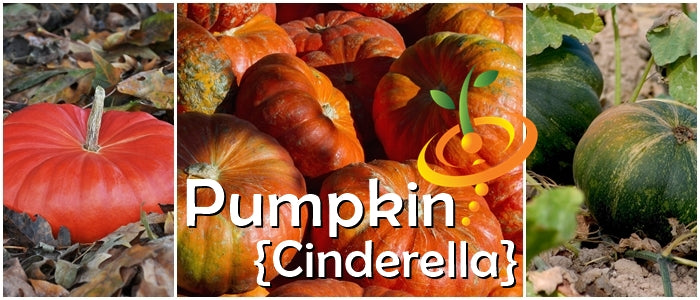
- The Cinderella is an old heirloom from France - looks just like the coach in the Cinderella fairy tale
- Plant produces medium-sized 25 lb. red/orange pumpkins
- This pumpkin has delicious flesh
- Days to Maturity | 100-110 days
Additional DetailsThe word pumpkin originates from the word pepon, which is Greek for “large melon". The French adapted this word to pompon, which the British changed to pumpion and later American colonists changed that to the word we use today, "pumpkin".
- The Cinderella is an old heirloom from France - looks just like the coach in the Cinderella fairy tale
Onion - Crimson Forest (Bunching)
From $299 USDUnit price /UnavailableDescription

-
Crimson Forest is a rare heirloom
- Dark red, burgundy, and purple colors
- Excellent for many culinary creations
- Grows well in containers and small spaces
- Easy to grow
-
Days to Maturity | 60 days
Onion Seeds | Onions are easy to grow, have a fairly short growing period and take up little space in the garden. Plant onions 1/4 inch deep and 3 to 4 inches apart in double rows, leaving 6 to 10 inches between rows.
Click here for complete Onion grow guide
-
Crimson Forest is a rare heirloom
🌱 Feat. Seed Types (A - Z)
Go to the seed shopcontinue shopping






































































































